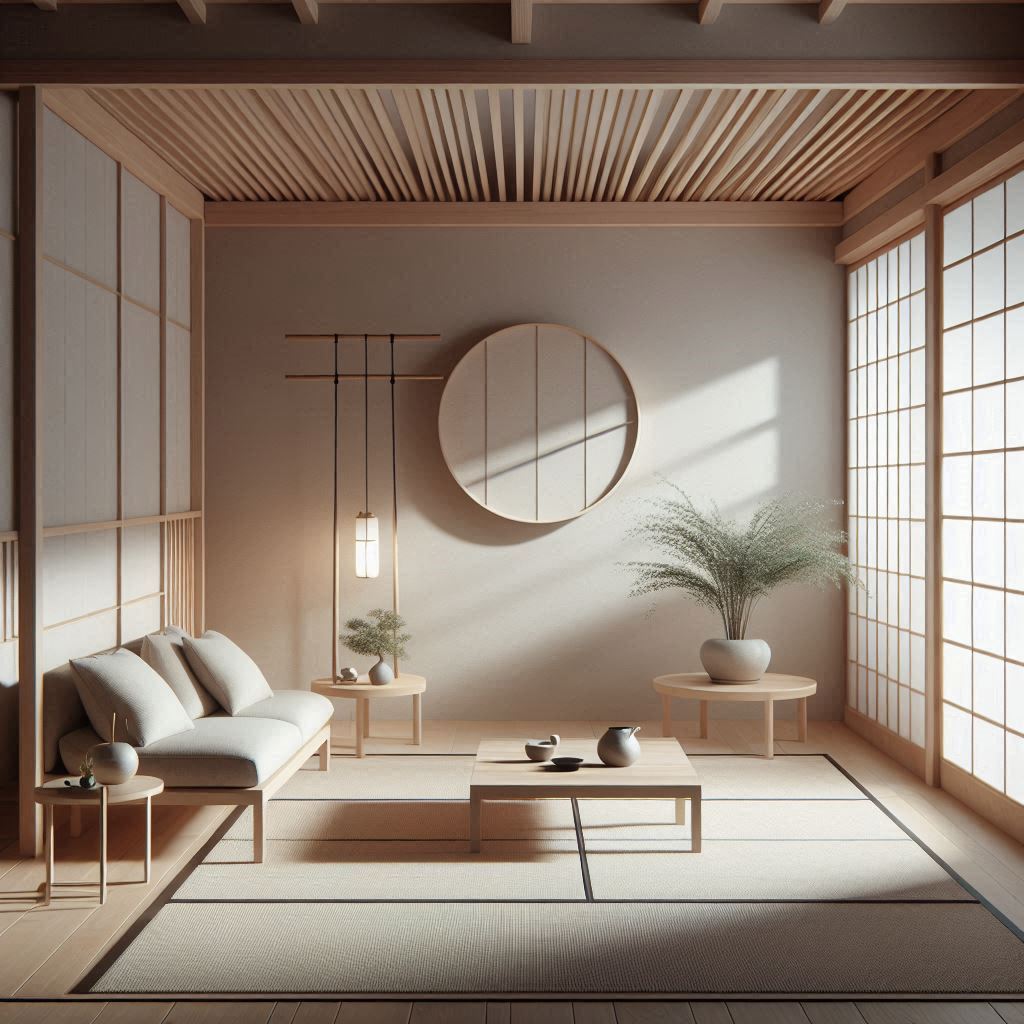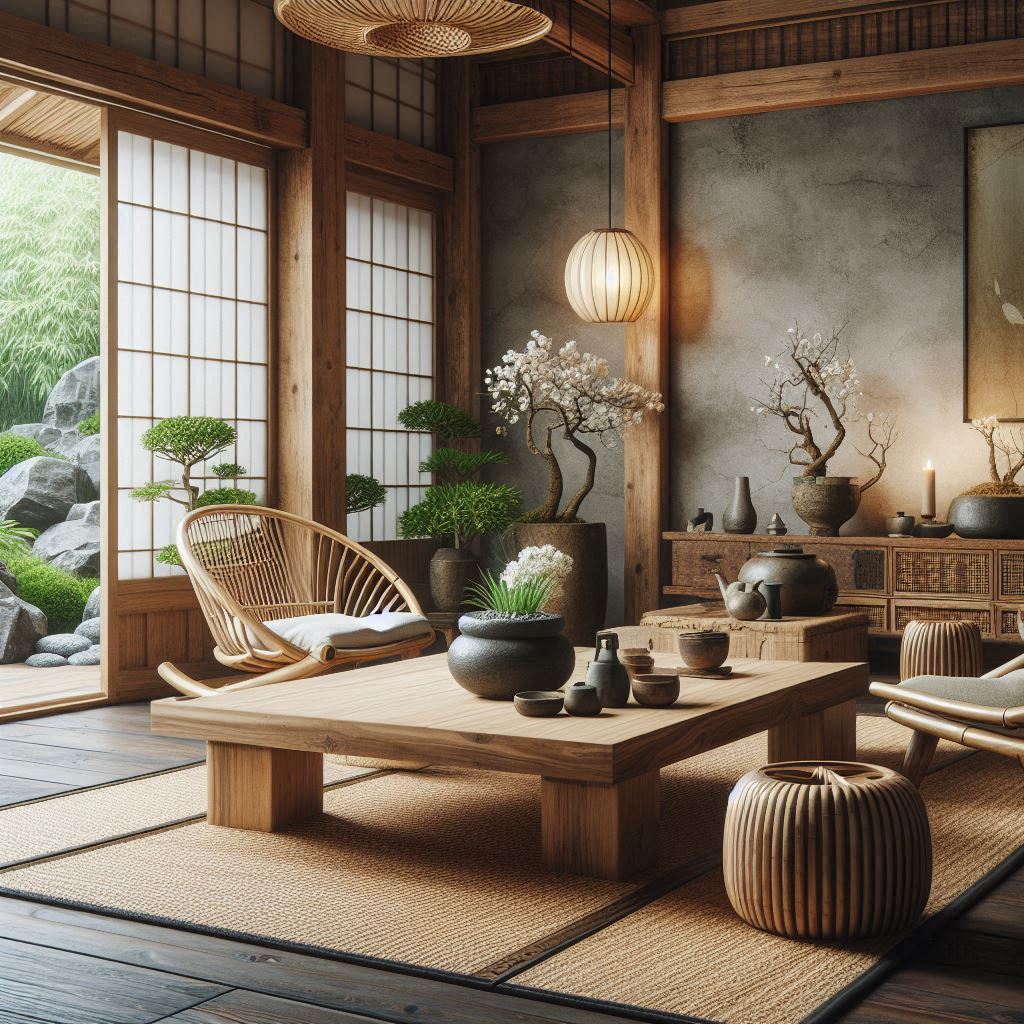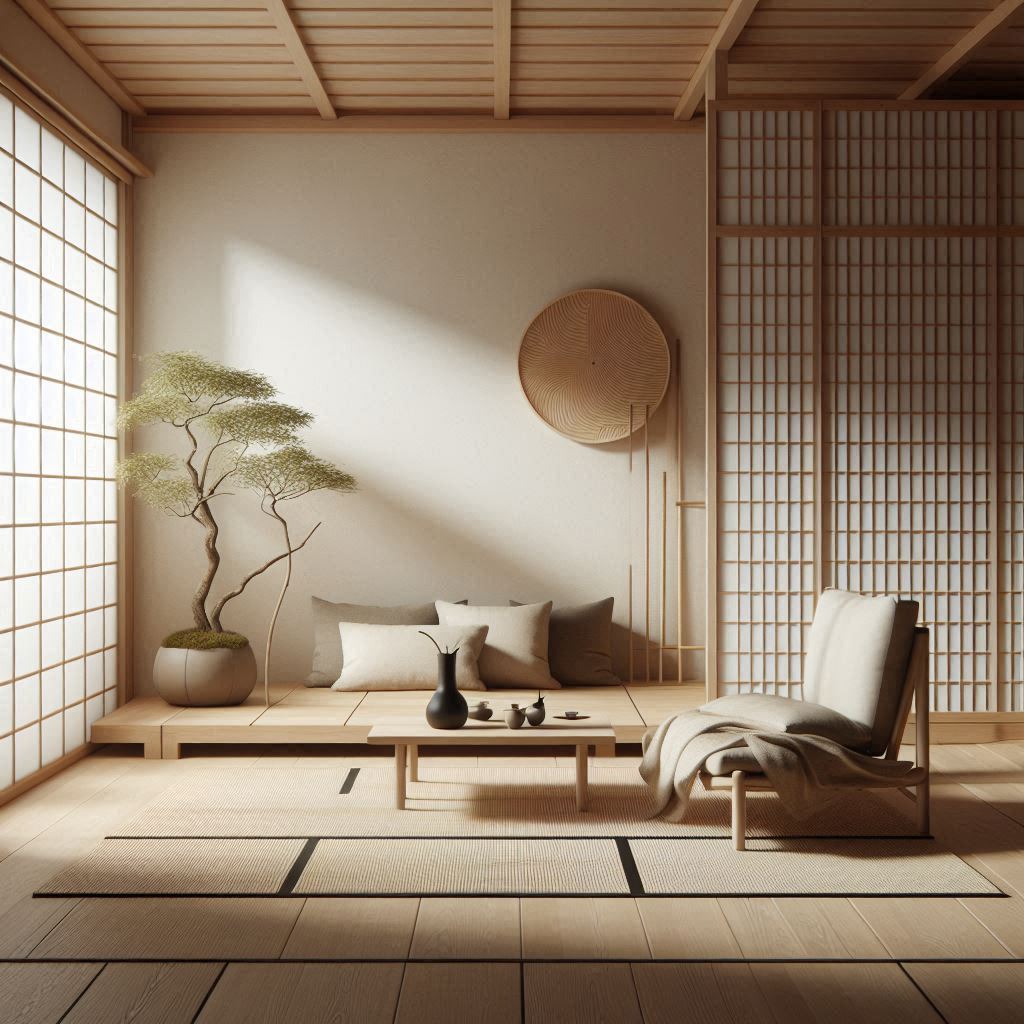Zen Japanese interior design is all about creating a peaceful space, but do you know how to master it?
Imagine walking into a room that instantly makes you feel calm. Wouldn’t that be amazing?

Zen design focuses on simplicity, balance, and natural elements. But, how can you actually bring that feeling into your own home? Is it complicated?
Actually, it’s much easier than you think! You don’t need fancy items or a big budget to create that peaceful vibe.
With just 5 simple steps, you can quickly transform any space into a calming Zen retreat. So, are you curious to find out how?
Let’s dive in and explore how to make Zen Japanese interior design work perfectly in your home!
Why Should Interior Designers Embrace Zen Japanese Interior Design?
Zen Japanese interior design is super important for interior designers who want to create calm and balanced spaces.
This style focuses on simplicity, natural elements, and open spaces. For many clients, especially those who feel stressed or overwhelmed, a Zen-inspired home can be a true sanctuary.
Plus, using Zen Japanese interior design can really set your work apart from other designers. It helps you offer something unique that clients will absolutely love.
By mastering this style, you can easily transform rooms into peaceful retreats that people will truly enjoy. Also, it’s perfect for both big and small spaces, which makes it super versatile for any project.
Whether you’re designing a cozy apartment or a large home, the Zen approach can work wonders. So, if you’re looking to impress your clients, incorporating this style can be a great way to show off your creativity and skills.
Isn’t that something worth exploring?
How Can Zen Japanese Interior Design Elevate Your Projects?
Now that you know how powerful Zen Japanese interior design can be, don’t you want to learn how to bring that calming vibe into your projects?
The best part is, it doesn’t have to be difficult or expensive. In fact, with a few simple changes, you can create that peaceful atmosphere effortlessly.
But how can you make it work perfectly in your clients’ spaces? And how can you ensure it truly stands out?
By mastering just a few easy steps, you can turn any room into a tranquil retreat that your clients will absolutely fall in love with.
Plus, when they feel relaxed and happy in their new space, they will definitely appreciate your skills even more. This could even lead to more referrals!
So, are you ready to discover how to do it in just 5 steps?
Keep reading, and you’ll find out how Zen Japanese interior design can completely transform your projects into peaceful, stress-free spaces. You won’t want to miss this!
How Can You Master Zen Japanese Interior Design in 5 Easy Steps?
Zen Japanese interior design is all about creating a calm, balanced, and peaceful environment. As an interior designer, mastering this style can help you craft spaces that make your clients feel relaxed and at ease. Here’s how to do it in five simple steps:
1. Embrace Simplicity
One of the core principles of Zen Japanese interior design is simplicity. The idea is to avoid unnecessary items and keep only what is truly needed.
This means choosing furniture with clean lines and minimal ornamentation. Every piece should have a functional purpose, and clutter should be avoided at all costs. Simple, functional furniture allows the room to breathe and doesn’t overwhelm the senses.
In Zen design, less is more. Keeping the room uncluttered allows the beauty of each item to stand out. It also creates a sense of tranquility. By focusing on fewer, higher-quality items, you help your clients feel more relaxed and centered.

2. Use Natural Elements
Zen Japanese interior design emphasizes a strong connection with nature. This is why natural materials like wood, stone, bamboo, and even plants are key features of this style.
Natural materials bring warmth, texture, and a sense of grounding to the space. A wooden coffee table, bamboo chairs, or stone walls can instantly add a peaceful, nature-inspired element to a room. The use of plants not only adds a touch of greenery but also improves air quality and enhances the overall peaceful vibe of the room.
By integrating natural elements, you create a sense of harmony between the indoors and outdoors. The materials feel authentic, bringing a serene and calming atmosphere to your designs.

3. Choose Neutral Colors
When it comes to color, Zen Japanese interior design favors neutral, soft tones. Colors like white, beige, gray, and soft browns are commonly used because they create a calm and relaxing environment.
These shades help to create a balanced, uncluttered look and give a sense of tranquility. The beauty of using neutral colors is that they allow other design elements, like textures and natural materials, to stand out. You don’t need bold or bright colors to make a statement; the simplicity of soft tones is often more impactful.
However, small accents of color can still be added. A pop of greenery from indoor plants or a soft-colored rug can bring life to the space while maintaining a calm atmosphere. The key is to keep the overall palette soothing and consistent.

4. Focus on Lighting
Lighting plays a major role in Zen Japanese interior design. The goal is to use soft, natural light whenever possible. Too many harsh lights can make a space feel uncomfortable and uninviting.
Maximize natural light by choosing large windows or glass doors that allow sunlight to flood the room. For artificial lighting, use floor lamps or table lamps with soft, warm bulbs. Avoid harsh, bright ceiling lights, as they can disrupt the peaceful ambiance.
Soft lighting is essential to creating the right atmosphere. The goal is to make the room feel peaceful and calming, not jarring. The right lighting will highlight the natural materials in the space and help create a balanced and relaxing environment.

5. Keep the Space Open
Zen Japanese interior design values open, spacious layouts. The idea is to avoid overcrowding the room with too much furniture or decoration.
Keep the furniture minimal and allow ample space for movement. When there is too much in the room, it can feel cluttered and chaotic, which disrupts the Zen balance. By maintaining open spaces, you allow the energy of the room to flow freely, which encourages relaxation and peace.
Carefully select a few key pieces that serve both function and aesthetics, and keep the rest of the room free of distractions. For example, instead of filling a room with many pieces of furniture, choose a few high-quality, well-placed items. This makes the space feel more open and calming, giving your clients more room to relax and breathe.

Conclusion
Mastering Zen Japanese interior design can transform any space into a peaceful, balanced, and calming environment. By embracing simplicity, using natural materials, choosing neutral colors, focusing on soft lighting, and keeping the space open, you can create a serene atmosphere that promotes relaxation.
These steps are not only easy to implement, but they are also deeply impactful in achieving the Zen vibe. In fact, when combined, they can help design spaces that allow your clients to feel more at ease. Additionally, each step builds upon the last to create a cohesive design.
For interior designers, adopting Zen Japanese interior design can give you a competitive edge. Today, clients are looking for spaces that feel calm, functional, and beautiful—and this style provides just that. In conclusion, creating harmony within a room can lead to more inviting and peaceful spaces.
So, why not bring the calming effects of Zen Japanese interior design to your next project? Your clients will truly appreciate it!
